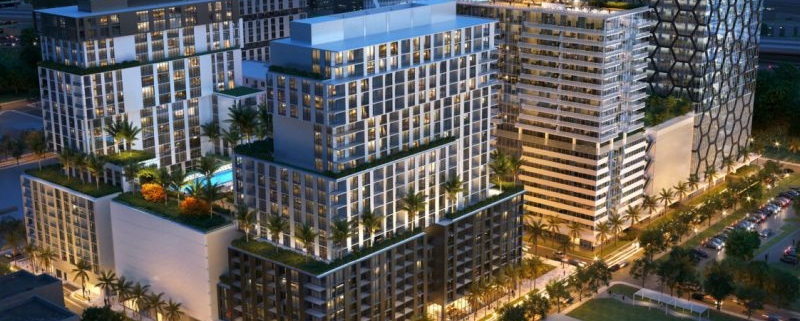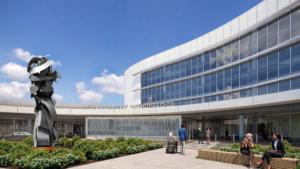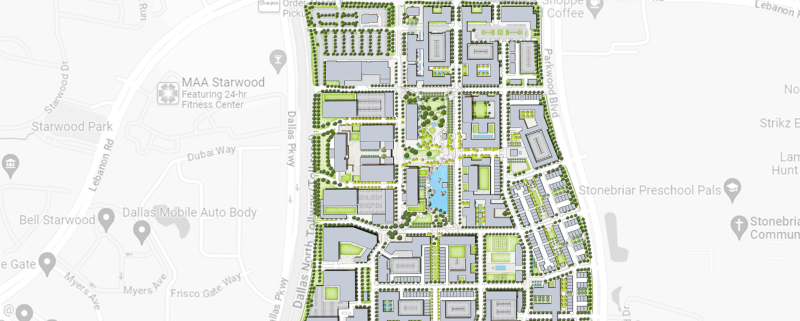Black Salmon, Allen Morris Launch $1B Mixed-Use Development To Include 500,000 SF Of Medical-Related Office Space
Black Salmon and The Allen Morris Co. are teaming up to develop Highland Park Miami, a $1 billion mixed-use development that will span 7 acres and increase the footprint of the Miami Medical District by approximately 10 percent.
The partners made the announcement on Tuesday, Sept. 26, describing the project as one of Miami’s most significant developments in decades that will drive the economy and serve the city’s important health-care sector. Based in Miami, Black Salmon is a national commercial real estate investment with a large development pipeline in South Florida. The Allen Morris Co. is one of the largest real estate firms in the Southeast and has offices in Atlanta as well as Miami, Coral Gables and Orlando in Florida.
The multi-block, master-planned development will feature 500,000 square feet of medical-related office space, a 150-key hotel, 1,000 residential units, retail and restaurants. To create a walkable, landscaped lifestyle community, Highland Park Miami will include open walkways and greenery.
Highland Park Miami will be located at 800 NW 14th St., between the Miami River and Florida State Road 836, the key east-west artery which leads directly to Miami International Airport and nearly every major destination in the city’s core. The development will also be visible from I-95 and across from the Jackson Memorial Hospital/University of Miami Health Complex.
A Multi-Phase Development
The developers still need city approval but expect to begin preliminary site clearing later this year for the multi-phase project that is expected to take years to build out. The first phase should see about 250,000 square feet of medical office space and up to 300 units of housing.
The developers will be able to substantially increase the density at Highland Park Miami because it is 400 feet from a Metrorail station and qualifies as a transit-oriented development. About six buildings will be constructed with heights up to 22 stories, according to The Real Deal, which also reported Black Salmon spent approximately $60 million acquiring land near the Metrorail for the expansive project.
Miami-based Arquitectonica, a globally recognized architecture firm, is the master planner and designer for the project. Arquitectonica is also the lead designer for a mixed-use development being built by a joint venture of Related Group and BH Group at 2999 NE 191st St. in Aventura, Fla., in metro Miami that will feature office and retail uses.
Oppenheim Architecture, a global firm with offices in Miami, New York and Switzerland, is designing the residential component at Highland Park Miami and Naturalficial, a Miami-based landscape architecture and design practice, is the landscape architect.
A Decade Of Planning
Led by Camilo Lopez, co-CEO & managing partner of Black Salmon, the team behind Highland Park Miami has been conceptualizing and planning the project for the past decade. Research included visiting major medical hubs in the U.S., including Houston and the Mayo Clinic Health District in Rochester, Minn., to learn more about the requirements for such a large undertaking that would expand what is already the second-largest health district in the U.S. Lopez said in prepared remarks the development should elevate Miami’s status as a premier health destination by adding state-of-the-art medical offices to support demand and new offerings for health-care professionals in a strategically designed and thoughtful setting.
Calling it a transformational project, W.A. Spencer Morris, president of The Allen Morris Co., said in a prepared statement the project will create a destination for the thousands of patients and employees at Jackson Memorial Hospital, the University of Miami Miller School of Medicine, the Miami VA Healthcare System and the larger Medical District ecosystem.
Source: Commercial Property Executive






